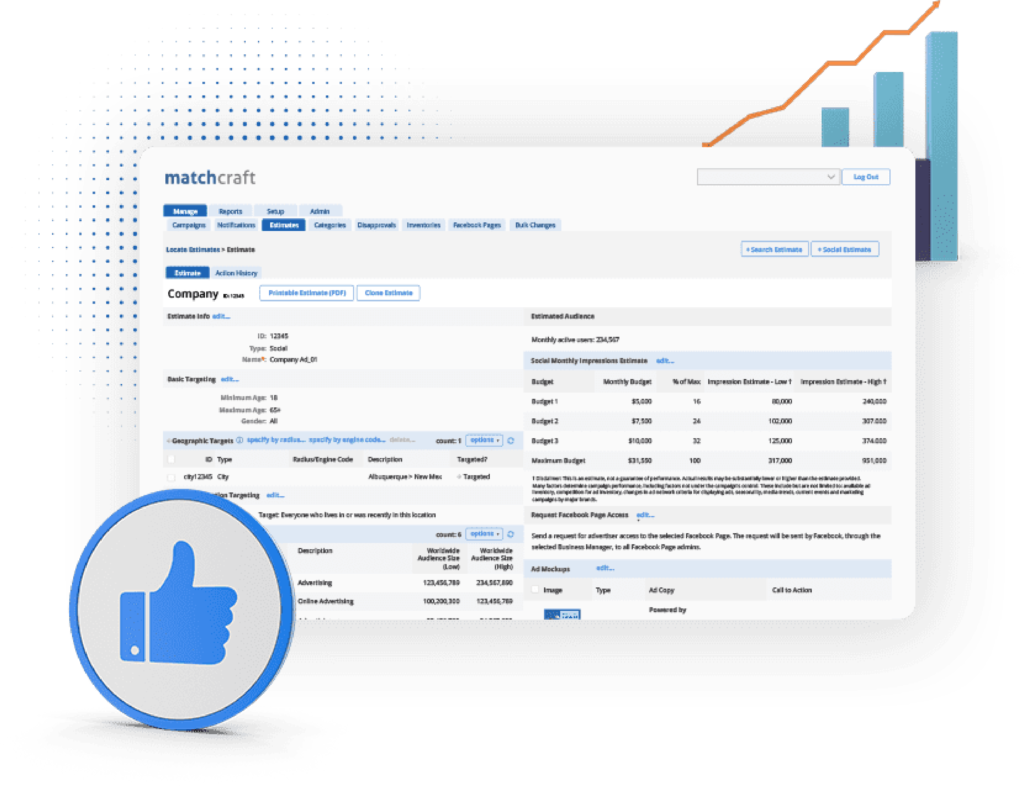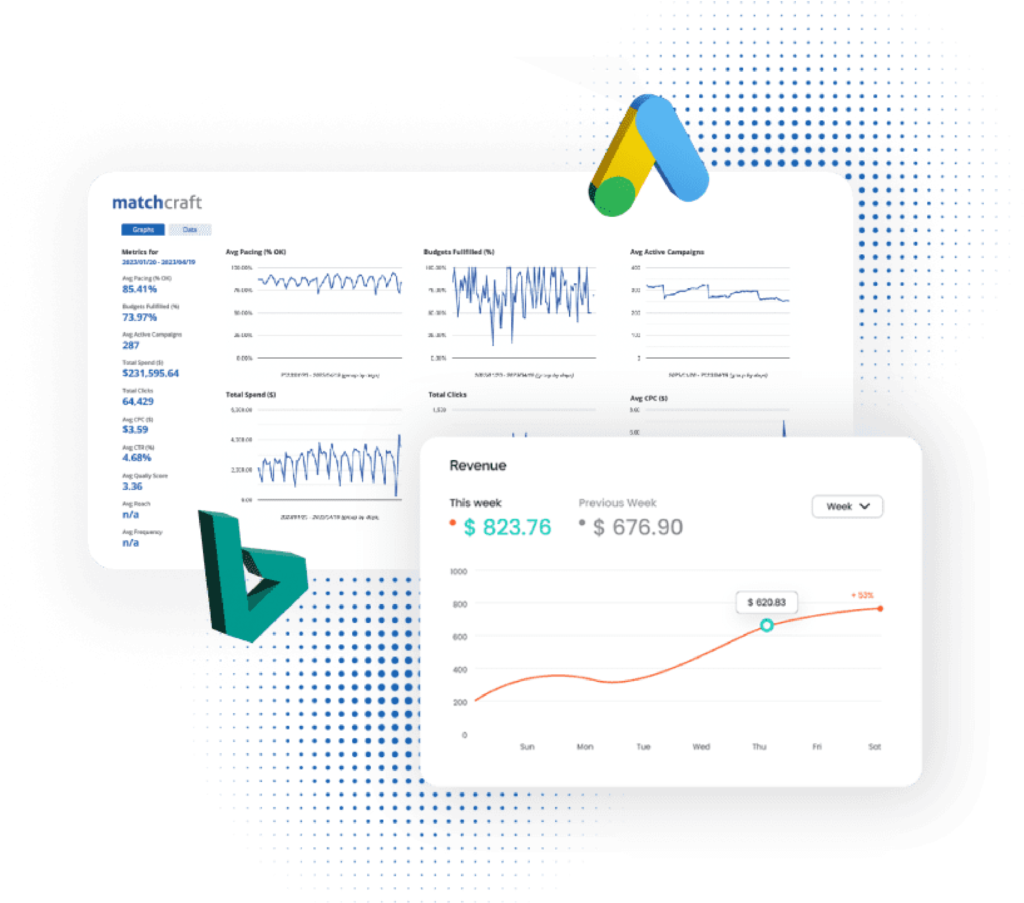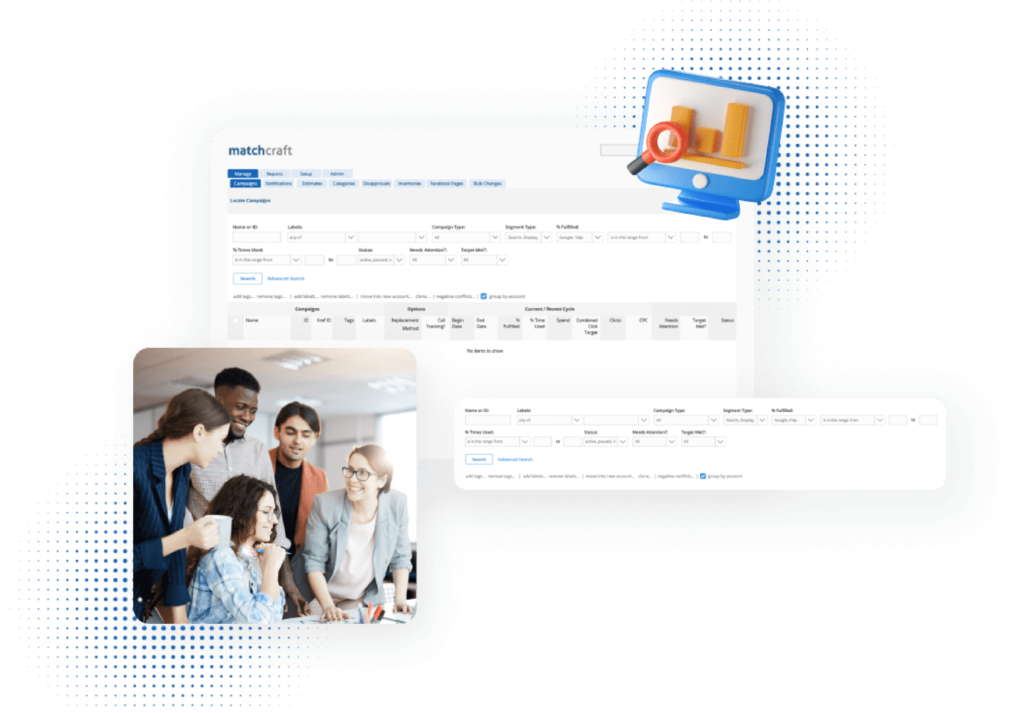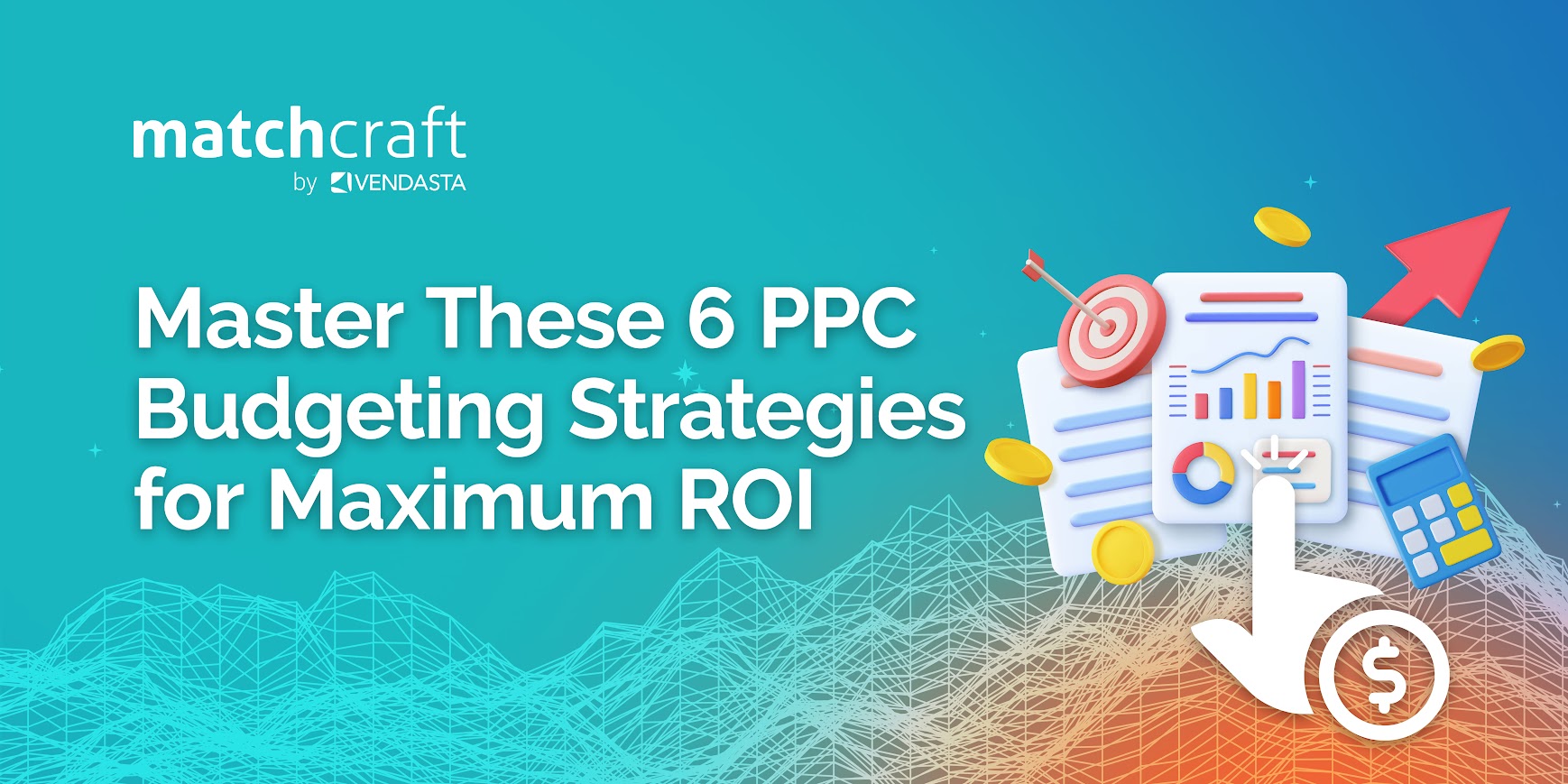Digital advertising spend worldwide is expected to reach a staggering $870 billion by 2027. All small, medium, and large businesses that effectively manage PPC budgets and optimize their campaigns see up to a 200% increase in return on investment (ROI).
However, achieving profitability through PPC campaigns is easier said than done. You must know what PPC budgeting strategies to adopt and how to optimize your campaigns for success.
In this blog post, we’ll guide you through the basics of PPC budgeting, outline six essential PPC budgeting strategies, and introduce PPC budgeting tools that can help you achieve your business goals.
Understanding PPC Budget Basics
Before diving into strategies, it’s crucial to understand the fundamentals of PPC budgeting.
Bid Amounts
Bid amounts vary greatly depending on keyword competition and market sector. In highly competitive industries, like finance or insurance, popular keywords can command high prices as numerous companies vie for top ad placements.
Conversely, in niche markets, keywords might be less competitive and, therefore, more affordable. Understanding these dynamics helps you set realistic bid amounts that align with your budget while ensuring your ads remain competitive.
Campaign Duration
Budgeting for the entire campaign period is crucial for maintaining a consistent presence in your target market. If you blow your PPC budget in the initial phase of your campaign, you’ll miss out on sustained engagement. Plan your budget to cover the full duration, ensuring your ads are always there when your potential customers are searching.
Ad Platforms
Not all ad platforms, such as Google Ads, Bing Ads, and social media platforms, are created equal, and their cost structures reflect this. For instance, Google Ads is often more expensive than other platforms due to its extensive reach and network. Compare all of them and distribute your budget more efficiently to maximize reach and ROI.
Keyword Selection
The target keywords play a crucial role in determining your PPC budget. High-competition keywords can drive significant traffic, but at a higher cost. Meanwhile, long-tail keywords can yield intent traffic at a lower cost. Striking the right balance between the two is the key to managing your budget.
Ad Quality and Relevance
Want to lower your cost per click (CPC)? Focus on improving the quality and relevance of your ads. You can consider creating ads that resonate with your target audience and improving the landing page experience.
The mantra of PPC success is continuous testing and optimization. Regular A/B testing of ad copy, images, keywords, and bidding strategies allows you to identify what works best. This iterative process helps you refine your campaigns, eliminate underperforming elements, and use your budget wisely.
Determining Your PPC Budget
A well-planned budget ensures that you achieve your business goals without overspending. Here are some practical steps and insights to determine your PPC budget:
Define Your Marketing Objectives
What do you want to achieve through your PPC campaign management? Is it about increasing traffic to your site or getting more leads, or driving more sales? Based on your objectives, we can determine the PPC marketing cost.
- Brand Awareness: Increasing brand awareness demands a broad reach and high frequency. This means casting a wide net to ensure as many people as possible see your ads multiple times. For this goal, you must be ready to allocate a larger budget.
- Lead Generation: For lead generation, your focus is to attract people who are more likely to convert into leads, so precision is key. This might involve spending more per click, but the quality of the leads you generate will justify the cost.
- Direct Sales: When your goal is direct sales, dynamic budget allocation becomes essential. Retarget users who have previously interacted with your brand and budget them to make a purchase. For this purpose, you’ll need to allocate more budget towards these high-intent prospects.
- Customer Engagement: For customer engagement, smaller, targeted budgets on social media platforms are often the most effective. Engaging content that encourages interaction and builds relationships is key. This approach is less about spending big and more about being smart with your budget to foster a loyal community.
How to Calculate Your Budget Needs
Once your objectives are clear, it’s time to estimate your budget. Take a look at the following formulas and examples to get started:
Example 1: Brand Awareness Campaign
Let’s say you want to reach 10,000 people with your brand awareness campaign, and the average CPC is $1. If your goal is to achieve a frequency of 3 (meaning each person sees your ad three times), you’d calculate your budget as follows:
Total impressions required = Reach x Frequency
Total impressions required = 10,000 x 3 = 30,000
Estimated budget = Total impressions x CPC
Estimated budget = 30,000 x $1 = $30,000
Example 2: Lead Generation Campaign
Suppose your goal is to generate 500 leads, and you estimate the average cost per lead (CPL) to be $50. Your budget calculation would be:
Estimated budget = Desired number of leads x CPL
Estimated budget = 500 x 50 = $25,000
Example 3: Direct Sales Campaign
If you aim to achieve 200 sales with an average cost per acquisition (CPA) of $75, your budget would be:
Estimated budget = Desired number of sales x CPA
Estimated budget = 200 x $75 = $15,000
Example 4: Customer Engagement Campaign
For a customer engagement campaign, if you plan to spend $10 per day on social media engagement ads for 30 days, your budget calculation is straightforward:
Estimated budget = Daily spend x campaign duration (in days)
Estimated budget = $10×30 = $300
Pro Tip: Need help with your PPC budgeting? Take advantage of our advanced PPC solution for agencies that come with intelligent budget optimization. 
Advanced PPC Budget Allocation Strategies
When it comes to maximizing your PPC budget, a nuanced and strategic allocation across various channels is essential. Let’s dive deeper into how to allocate your budget across different platforms to ensure you get the best return on your investment.
1. Allocate Budget Across Channels
Distributing your PPC budget across multiple channels can maximize your reach, engagement, and conversions. Different platforms offer unique advantages, and a strategic allocation helps you leverage these benefits for the best overall return on investment (ROI).
- High-Performance Allocation: This means identifying the channels where your ads perform exceptionally well and allocating a significant portion of your budget.
- Testing and Exploration: Reserve a portion of your budget specifically for testing and exploring new platforms. This proactive approach helps you discover untapped opportunities that could become significant revenue drivers in the future.
- Niche Platforms: Niche platforms can be goldmines for targeted demographics. They might cater to specific industries, professions, or interests, offering highly engaged audiences at a lower cost.
2. Analyze Historical Data
Think of it as looking into your campaign’s past to predict its future. By leveraging insights from past performance, you can fine-tune your strategies, maximize your ROI, and make your PPC ads more efficient.
Let’s explore how to use historical data to your advantage.
- Identify High-Performing Campaigns: Start by reviewing your past campaigns to identify which ones delivered the best results. Look at metrics like click-through rates (CTR), conversion rates, CPC, and overall return on ad spend (ROAS).
- Analyze Seasonal Trends: Many industries experience seasonal fluctuations in demand. Analyzing historical data helps you identify these trends and adjust your budget accordingly.
- Evaluate Keyword Performance: Identify which keywords generated the most conversions and had the lowest CPC. Use this information to optimize your keyword strategy, focusing on high-performing keywords while phasing out underperforming ones.
- Assess Audience Segments: Understanding which audience segments responded best to your ads is crucial. Analyze data on demographics, geographic locations, and device types to identify your most valuable audience segments. Allocate more budget to target these high-value segments for better results.
- Review Ad Creatives: Compare the past performance of different ad formats, headlines, and images to determine what works best. Use these insights to refine your ad creatives and improve engagement.
Pro Tip: Get complete control over your PPC campaigns with MatchCraft’s advanced platform that provides all-in-one dashboard and automation capabilities. 
3. Understand the Audience and Market
Getting a deep grasp on the audience and market is key to making your budget work harder and smarter. When you tailor your budget based on who you’re trying to reach and what your competitors are up to, your campaigns become more targeted, efficient, and impactful.
Begin by analyzing your competitors’ PPC strategies. Get valuable insights into your competitors’ ad spend, keywords, and performance by using advanced PPC tools.
Monitor your ad positioning relative to your competitors. If your ads consistently rank lower, consider increasing your bids for critical keywords to improve visibility. However, if competition is too fierce and costs too much, it might be more fruitful to focus on long-tail keywords with lower competition and higher intent.
Understanding how your audience behaves is also equally important. Data on age, gender, location, interests, and online behavior will help you create detailed audience segments for more targeted campaigns.
4. Consider Seasonality and Industry Trends
Adjusting your PPC cost for seasonality and industry trends is key to getting the most out of your campaigns. When you align your budget with high-demand periods and industry shifts, you make sure your ads are seen when your audience is most likely to convert.
So, let’s dive into how to stay in sync with these changes and make your PPC budget work harder for you!
Understanding Seasonality
Seasonality refers to predictable fluctuations in consumer behavior and demand based on the time of year. Different industries experience these seasonal peaks and troughs at different times.
Steps to Adjust Your Budget for Seasonality:
- Analyze historical data to identify when your business experiences peaks and troughs in demand. Look at your sales data, website traffic, and PPC performance over the past few years to spot patterns.
- Once you’ve identified your seasonal peaks, plan your budget allocation to ensure you have enough funds to cover these periods.
- Develop specific campaigns tailored to seasonal trends and ensure your ad creatives and messaging are relevant to the seasonal context.
- Continuously monitor the performance of your seasonal campaigns. Use real-time data to make adjustments as needed.
Understanding Industry Trends
Industry trends can have a significant impact on consumer behavior and, consequently, on your PPC campaigns. Staying informed about these trends allows you to adapt your PPC budget and strategy to stay ahead of the competition.
Steps to Adjust Your Budget for Industry Trends:
- Regularly follow industry news, reports, and publications to stay updated on the latest trends and developments.
- Use tools like Google Analytics, social media analytics, and industry-specific platforms to analyze trend data.
- When a new trend emerges, be ready to adapt your PPC strategy accordingly.
- Allocate a portion of your budget specifically for campaigns that leverage current industry trends.
5. Campaign-Level Budget Allocation
Allocating your PPC budget at the campaign level needs a smart strategy to make sure your resources are going to the most impactful areas. By breaking down your budget based on your goals, different product or service lines, and geographic targeting, you can get the best bang for your buck and see real results.
Here’s how to make your budget work smarter!
Strategic Objective Segmentation
Allocating your budget based on different stages of the marketing funnel ensures that you are addressing your audience’s needs at every step of their journey.
Top of the Funnel (TOFU) – Awareness: Allocate a portion of your budget to campaigns that focus on broad reach and awareness. This stage typically requires a larger budget to cover a wide audience base. Recommended ad types:
- Display ads
- Social media ads
- Video ads
Middle of the Funnel (MOFU) – Consideration: Allocate the budget to campaigns that educate and inform potential customers about your products or services. Recommended ad types:
- Search ads
- Retargeting ads
- content marketing
Bottom of the Funnel (BOFU) – Conversion: Focus your budget on high-intent keywords and retargeting campaigns that encourage prospects to take action. Recommended ad types:
- Search ads with strong CTAs
- Dynamic remarketing ads
Product or Service Line Segmentation
Maximize profit by promoting products with higher profit margins. Allocate a significant portion of your budget to PPC campaigns that promote high-margin products. Use targeted search ads and product-specific display ads to highlight these products.
For example, if you sell electronics, allocate more budget to promote high-margin items like premium laptops or smartphones through Google Shopping Ads and targeted display ads.
If your objective is to increase visibility and sales for new or emerging product lines, dedicate a budget to campaigns that introduce and promote new products. Use launch campaigns, social media ads, and influencer marketing to create buzz and drive initial sales.
Geographic Targeting
Analyze performance data to determine which geographic areas yield the best results. Allocate more budget to these high-performing regions and consider reducing spend in underperforming areas.
For instance, if your data shows that customers in urban areas have higher conversion rates, allocate more budget to target these regions with localized search and display ads.
If you’re focusing on regions with high market potential but lower current penetration, allocate the budget to campaigns aimed at increasing brand presence and market share in these areas.
6. Distribution of PPC Budget Among Keywords
By spreading your budget across different types of keywords, you can make sure you’re reaching the right audience at the right time.
Let’s dive into how to allocate your PPC budget among branded keywords, TOFU keywords, and BOFU keywords.
Branded Keywords
Branded keywords are search terms that include your company’s name or product names. These keywords usually have high conversion rates and lower competition, making them a cost-effective way to drive traffic and sales.
Bidding on your own branded keywords helps you control the narrative and prevent competitors from capturing your audience.
TOFU Keywords
Top of the Funnel (TOFU) keywords are broad search terms aimed at building brand awareness and attracting a wide audience. These keywords help you reach potential customers who are just beginning their research or discovery phase. Here’s how to approach TOFU keywords:
Create informative and engaging content that aligns with TOFU keywords. Use blog posts, how-to guides, and educational videos to attract and educate your audience.
BOFU Keywords
Bottom of the Funnel (BOFU) keywords are highly specific search terms used by users ready to make a purchase. These keywords have high conversion potential and can maximize your immediate ROI.
BOFU keywords target users with strong purchase intent, making them more likely to convert quickly. These keywords often include specific product names, features, or action-oriented phrases.
Tip: Optimize your search ads with our state-of-the-art PPC management tool that gives you access to our proprietary ad copy and keyword library, covering more than 2500 categories. 
How to Leverage Data for Smarter PPC Budgeting
Efficient PPC budgeting can be a game-changer for your campaigns. By leveraging data wisely, you can ensure that every penny is well spent.
Here’s how to do it:
Data Integration: The Power of Combining Multiple Sources
Imagine having all your PPC data neatly integrated and accessible in one place. Sounds dreamy, right? Well, it’s possible and incredibly beneficial. Integrating data from multiple sources allows you to get a holistic view of your campaigns, spot trends, and make data-driven decisions.
Why Is it important?
- Unified View: By bringing together data from various platforms like Google Ads, Facebook Ads, and others, you gain a comprehensive perspective of your marketing efforts.
- Accurate Attribution: It helps in better-attributing conversions and understanding which channels are driving the most value.
- Informed Decisions: With all your data in one place, you can make more informed and quicker decisions, adjusting your strategies as needed.
Tools to Help: MatchCraft’s platform is a fantastic tool for this. It synchronizes data across various ad networks and provides ROI calculations, making it easier to see which campaigns are delivering the best results.
Real-Time Data Access: Making Swift Budgetary Decisions
Having real-time data access means you’re always in the know, and you can make swift budgetary decisions without the guesswork. Imagine spotting an underperforming campaign and reallocating the budget to a high-performing one instantly.
Why is it crucial?
- Agility: It allows for quick adjustments, preventing budget wastage on underperforming campaigns.
- Competitive Edge: Staying ahead of the competition by being able to react promptly to market changes.
- Optimized Spending: Ensuring that your budget is always being used where it can have the most impact.
Comprehensive PPC Dashboards: Visualizing Key Performance Indicators
A well-designed PPC dashboard is your best friend. It visualizes key performance indicators (KPIs) in an easily digestible format, helping you monitor your campaigns’ health at a glance.
A good dashboard provides a clear view of important metrics like CTR, conversion rates, and cost per conversion. Plus, spotting trends becomes easier, helping you tweak your strategies in real time.
When designing your PPC dashboards, focus on:
- Relevant KPIs: Choose KPIs that align with your business objectives.
- User-Friendly Design: Ensure that the dashboard is intuitive and easy to navigate.
- Customization: The ability to customize your dashboard to show the metrics that matter most to you is invaluable.
Remember: The key to smart PPC budgeting lies in leveraging data efficiently and making informed decisions. Leverage our PPC management solution to optimize your PPC budgeting and performance. Contact us to schedule a demo today.
Author: Maria Selvam Amalraj
